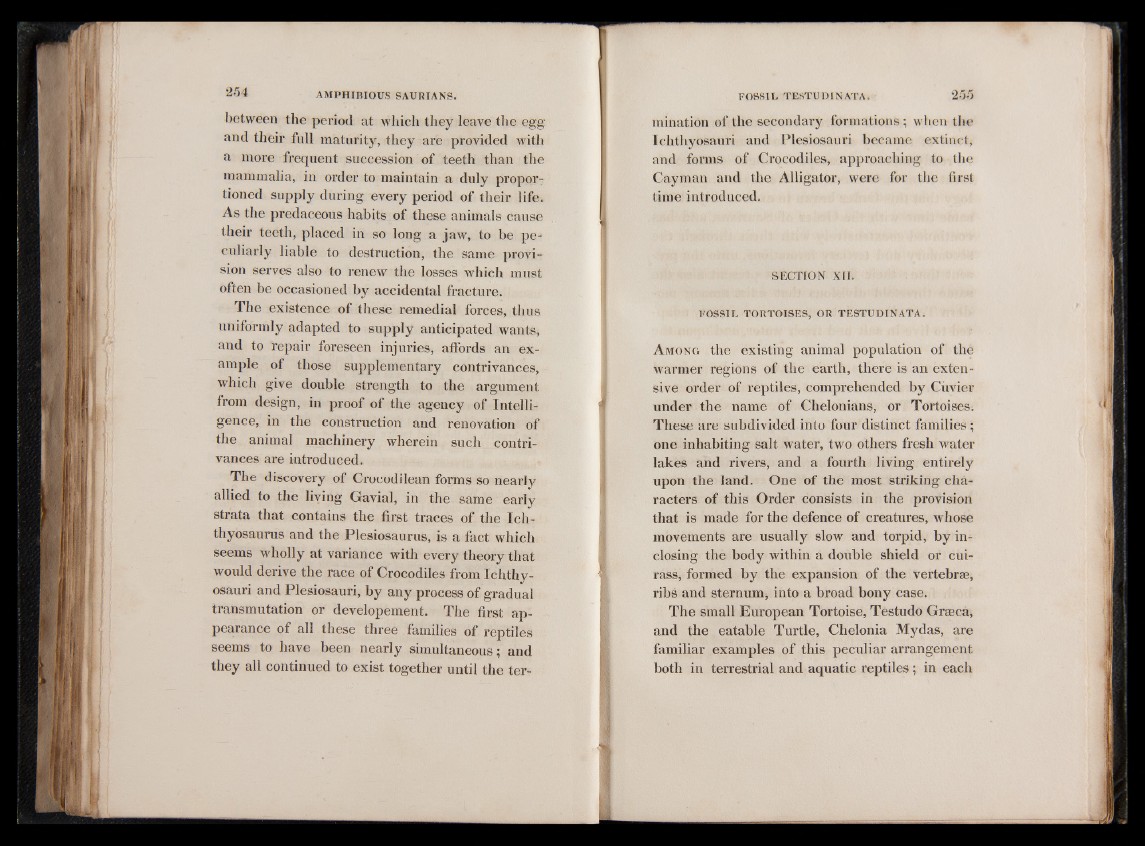
between the period at which they leave the egg
and their full maturity, they are provided with
a more frequent succession of teeth than the
mammalia, in order to maintain a duly proportioned
supply during every period of their life.
As the predaceous habits of these animals cause
their teeth, placed in so long a jaw, to be peculiarly
liable to destruction, the same provision
serves also to renew the losses which must
often be occasioned by accidental fracture.
The existence of these remedial forces, thus
uniformly adapted to supply anticipated wants,
and to repair foreseen injuries, affords an example
of those supplementary contrivances,
which give double strength to the argument
from design, in proof of the agency of Intelligence,
in the construction and renovation of
the animal machinery wherein such contrivances
are introduced.
The discovery of Crocodilean forms so nearly
allied to the living Gavial, in the same early
strata that contains the first traces of the Ichthyosaurus
and the Plesiosaurus, is a fact which
seems wholly at variance with every theory that
would derive the race of Crocodiles from Ichthyosauri
and Plesiosauri, by any process of gradual
transmutation or developement. The first appearance
of all these three families of reptiles
seems to have been nearly simultaneous; and
they all continued to exist together until the termination
of the secondary formations; when the
Ichthyosauri and Plesiosauri became extinct,
and forms of Crocodiles, approaching to the
Cayman and the Alligator, were for the first
time introduced.
SECTION XII.
FOSSIL TORTOISES, OR TESTUDINATA.
A m o n g the existing animal population of the
warmer regions of the earth, there is an extensive
order of reptiles, comprehended by Cuvier
under the name of Chelonians, or Tortoises.
These are subdivided into four distinct families;
one inhabiting salt water, two others fresh water
lakes and rivers, and a fourth living entirely
upon the land. One of the most striking characters
of this Order consists in the provision
that is made for the defence of creatures, whose
movements are usually slow and torpid, by inclosing
the body within a double shield or cuirass,
formed by the expansion of the vertebrae,
ribs and sternum, into a broad bony case.
The small European Tortoise, Testudo Graeca,
and the eatable Turtle, Chelonia Mydas, are
familiar examples of this peculiar arrangement
both in terrestrial and aquatic reptiles; in each